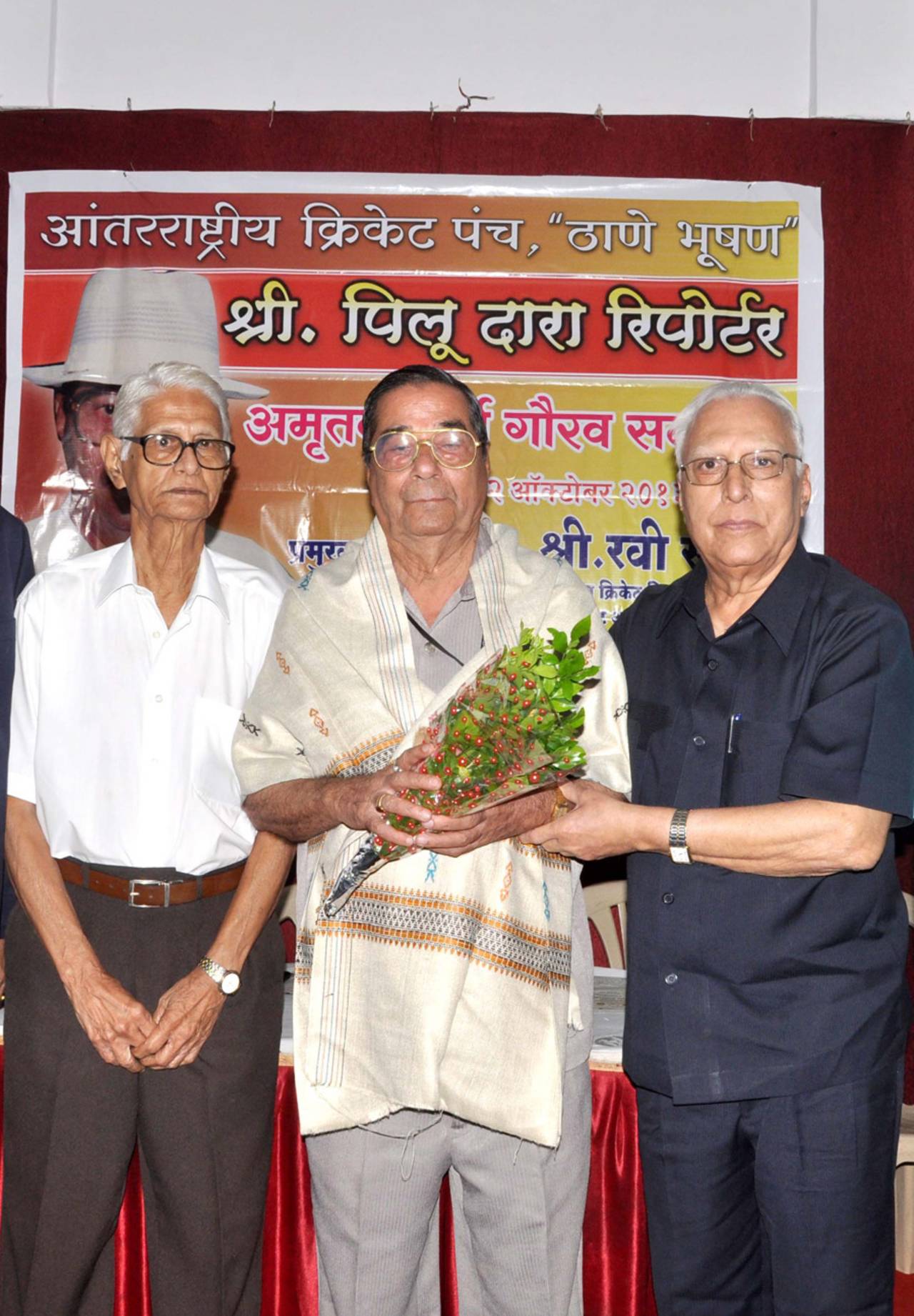The first image that comes to mind when we speak of courage in cricket is that of a batsman facing the fury of a great fast bowler whose missiles are directed at him at close to 100mph. Those suicidal gentlemen at bat-pad are no less gutsy, though helmeted batsmen and fielders enjoy a modicum of protection today.
Courage on the field of play is not always of the physical kind, though. The spin bowler who has been mauled by a master batsman, the captain who must decide the timing of his declaration or inserts the opposition for strategic advantage, and the wicketkeeper who stands up to a quick, all need the quality in abundant measure. The character of an umpire can be severely tested too by the uncertainties of the game and the surprises it can throw up from time to time.
Piloo Reporter, who, along with VK Ramaswami was one of the first neutral umpires from India, was a one-man crusade against the menace of chucking, a campaign he carried on bravely and ruthlessly in the 1970s and '80s.
Besides the physical danger they pose, chuckers can win matches for their teams because of their abnormal pace, bounce, deviation and shock value. Spinners of that ilk do not pose physical danger, but they can be unplayable. At a time when most umpires - empowered as they were to no-ball suspect deliveries - looked the other way, fearing unpleasant repercussions, Reporter watched dubious actions like a hawk and fearlessly called offending bowlers. The Delhi and Punjab left-armer
Suresh Luthra, an awkward, often fearsome, paceman with 262 first-class wickets at an impressive average of 16.92, was one of Reporter's more notable victims.
Among the slow bowlers in the south notorious in the 1970s for their suspect actions were a couple of young offspinners of Karnataka. I remember that when one of them was called for chucking, the captain, Brijesh Patel, simply switched him to the other end, where he was permitted to bowl unhindered by a lenient square-leg umpire. Such a stratagem would have been a complete non-starter with Reporter, who in such circumstances would stand a yard behind his normal stance as straight umpire and penalise the offending bowler.
For all his allergy to chuckers, Reporter was not a stern, unsmiling umpire. On the contrary he was one of the friendliest of his tribe, joking and chatting with the players on the field and after the day's play. And he was not averse to sitting down with them for a cup of tea or a beer or two.
When I was a member of the South Zone side in a Duleep Trophy match
in Nagpur, my room was the venue of so-called team meetings in the evenings. CR Rangachari, our manager, and the two umpires, Reporter and Rajan Mehra, were our daily guests. (Lest the reader come to any hasty conclusions, South lost the match to Central.) The main entertainment was provided by Reporter, who seemed to have an endless supply of jokes and anecdotes involving characters like the overweight Bombay umpire who fell down every time he signalled a leg-bye, and the batsman who shouted "Mind your end!" to his partner, only to be run out himself.
Thanks to the friendship between us that resulted, I was able to do a good deed a couple of years later, when Reporter called the Hyderabad fast bowler
L Vasan for chucking in a match at the Lal Bahadur Stadium. The tall, strapping Vasan, one of the nicest young men in cricket, was absolutely devastated, but by inviting both Reporter and Vasan home to dinner, I think I was able to soften the blow somewhat.
The next time I met Reporter was at Chepauk during the Ranji Trophy
quarter-final in February 1982, a match Tamil Nadu lost by 20 runs. S Venkataraghavan took seven wickets in the first innings, and debutant L Sivaramakrishnan the same number in the second on a wearing wicket. Young Maninder Singh of Delhi was the other exciting spinner on view, and there was some good batting by both sides, but the match was marred by a couple of poor umpiring decisions against Tamil Nadu's batsmen in the dying moments. An irate crowd booed Reporter, and one of them actually slapped him while he was returning to the pavilion after the game.
Here was a good umpire who had a bad day at the office, and had to suffer spectator vigilantism as a consequence. The look of horror and humiliation on Reporter's face was quite pitiable. But not only did I stay in the background, I did not go up to him even after the crowd dispersed, to offer him words of solace and friendship. I took the easy option of being a detached bystander.
